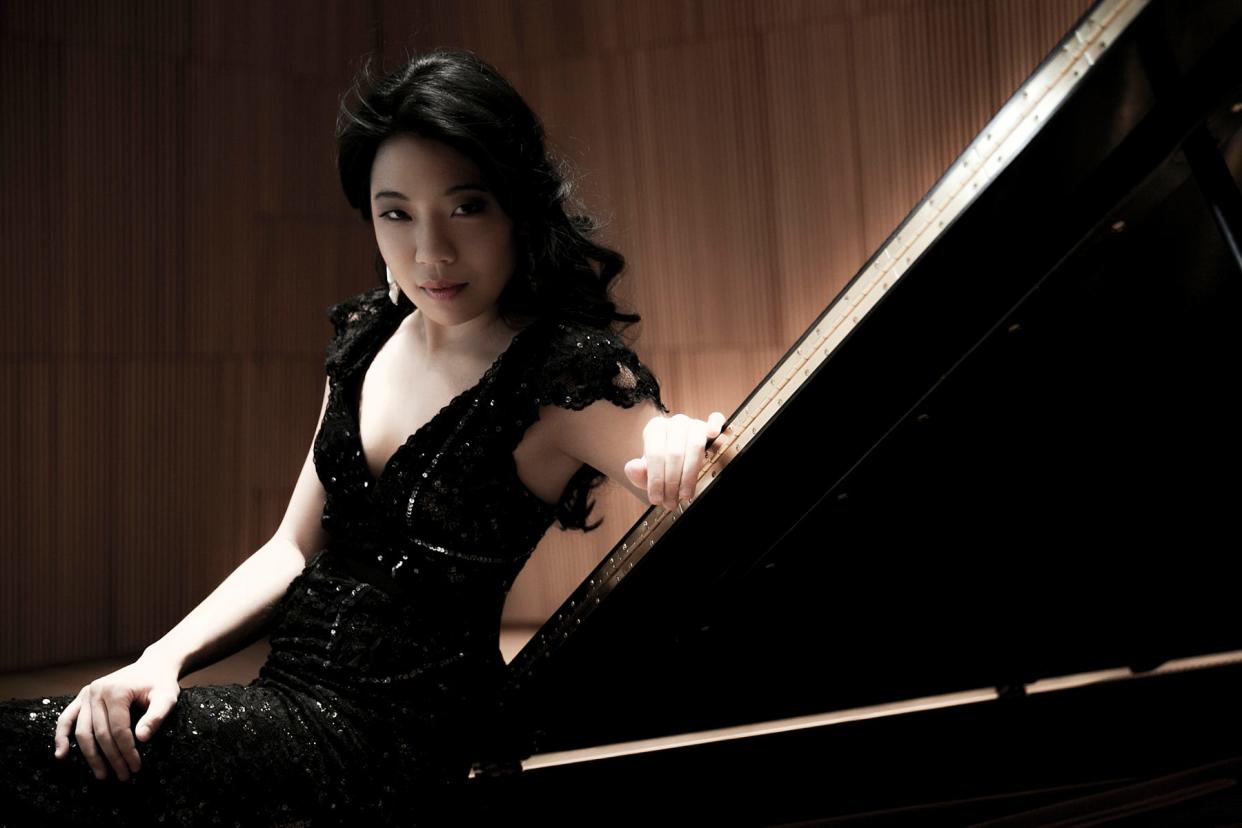Sarasota Orchestra explores varied emotions in Masterworks season opener

While the final movement of Hector Berlioz’s monumental “Symphonie Fantastique” sounds like something that ought to be played on Halloween, with its hallucinogenic imagery of death, witches, monsters and demons in a wild and grotesque dance, the overall symphony is an emotional outpouring of despair over unrequited love.
The French composer had fallen instantly in love with the Irish actress Harriet Simithson after seeing her perform the role of Ophelia in “Hamlet” in Paris in 1827. His love letters to her went unanswered, and he poured his anguish into his composing. The result, in 1830, was the “Symphonie Fantastique,” and even then Berlioz was thwarted when his beloved missed the premiere.
The Sarasota Orchestra will explore the emotional nuances of the composer’s (possibly) opium-infused passion in the first Masterworks concerts of the new season, with performances Nov. 4-6 at the Van Wezel Performing Arts Hall. Also on the program, under the baton of David Alan Miller, are Quinn Mason’s 2019 composition “A Joyous Trilogy” and Edvard Grieg’s Piano Concerto in A minor, with Joyce Yang on piano.
Miller has been music director of the Albany Symphony since 1992.
Arts Newsletter: Sign up to receive the latest news on the Sarasota area arts scene every Monday
Revising the season: Music director’s death leads to changes in Sarasota Orchestra season
Planning a new home: Sarasota Orchestra plans to leave city of Sarasota for site on Fruitville Road
The “Symphonie Fantastique” was titled by Berlioz “An Episode in an Artist’s Life,” and he provided detailed program notes to guide the listener through the plot that unfolds over the symphony’s five movements, from the composer’s first sighting of his beloved, through a festive dance to a pastoral scene ending in thunder and lightning that leads to the artist’s poisoning himself with opium. The final two movements are a drug-fueled dream in which the artist imagines he has killed his beloved, been executed and descended into the realm of witches and monsters.
“This is a piece that I think people relate to once you’ve been heartbroken,” said Bharat Chandra, principal clarinet for the orchestra. “There’s something about the young love that is spurned, the overwhelming feelings that you have. Berlioz went to this incredible extreme by telling this story. You want so much to have the audience know what the music is depicting.”

Chandra’s E-flat clarinet rendition of the idee fixe, Berlioz’s obsession with the object of his desire, is just one version of the theme that winds throughout the symphony.
“Each iteration becomes a totally new thing,” said Chandra. “The clarinet gets to play the theme, Harriet, interrupted by the guillotine coming down on the head of the composer. He has realized that she has turned him down; that life might as well be done.”
The music goes so far as to represent not just the sound of the drop of the guillotine, but the sound of the composer’s head bouncing down the steps from the scaffold.
“It’s amazing to see such a raw translation of scene and emotion,” said Chandra.
The Berlioz symphony requires an extraordinary number of musicians, 90 – about two dozen more than the usual Masterworks program – and some unusual instrumentation, including church bells, two harps, four timpani and two tubas, which is exciting for Aaron Tindall, principal tuba, who typically has the tuba section to himself.
The tuba wasn’t invented until 1835 – Berlioz wrote what is now the tuba part for an instrument called the ophicleide.
“We call it the ‘awful,’” said Tindall. “With modern instruments we have available to us now, (the symphony) becomes more magnificent and ferocious.”
But it’s not until the final movement that Tindall’s tuba truly comes into play.
“We get to play the Dies Irae (funeral chant),” said Tindall. “The bells ring, and then the tubas come in with this big theme. I get excited about that. My colleagues get to play these magnificent lines and solos. The harmonics are amazing.”
Planning new shows: Resilient Venice Theatre plans reopening after Ian damage
International artists: The Ringling goes eclectic for Art of Performance series
First steps for new venue: Panel named to select architect for new Sarasota Performing Arts Center
Chandra noted the symphony can be a difficult piece to play technically.
“It’s constant, it’s long, and it’s so extreme. You’re trying to get the audience to feel those drastic alternations between tenderness, remorse, self-loathing, anger, jealousy, rage, death, satanic mockery. All these things are your goals as makers of the sound. You’re trying to convey a meaning that is beyond the sum of the notes on the page. This is one where you’re really having to tap into your personal experiences, and even experiences you haven’t had yet.”
The symphony marked the beginning of French Impressionistic music, said Tindall.
“Berlioz was very pivotal. And the best composers are master storytellers. The orchestra is just a glittering sound machine,” he said.
And a footnote: Harriet Smithson heard the Symphonie Fantastique a few years after its premiere, and married Berlioz. The marriage didn’t last, but the music has.
Masterworks ‘Symphonie Fantastique’
Sarasota Orchestra, guest conductor David Alan Miller, guest pianist Joyce Yang. 7:30 p.m. Nov. 4-5, 2:30 p.m. Nov. 6. Van Wezel Performing Arts Hall, 777 N. Tamiami Trail, Sarasota. $37-$99. 941-953-3434; sarasotaorchestra.org
Read more stories by Susan L. Rife
This article originally appeared on Sarasota Herald-Tribune: Guest artists join Sarasota Orchestra for ‘Symphonie Fantastitique’

